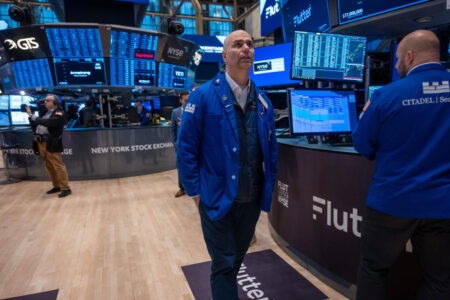US stock futures trod water on Monday as investors regrouped for a packed week ahead of a fresh inflation data test for rate-cut views and the start of first-quarter earnings season.
Futures on the Dow Jones Industrial Average (^DJI) and the S&P 500 (^GSPC) hugged the flatline. Contracts on the tech-heavy Nasdaq 100 (^NDX) were also little changed.
A strong jobs report helped lift stocks to gains on Friday but couldn’t fend off weekly losses as doubts about the Federal Reserve’s resolve for interest-rate cuts preyed on minds.
US bonds sold off last week amid that uncertainty, and the pressure continued Monday with a slight rise in the 10-year Treasury yield (^TNX) to above 4.45%. That puts the benchmark closer to the key 4.5% level seen by some as a potential tipping point for a run-up toward last year’s highs.
Other concerns added to the unsettled mood: divided views on policy from Fed speakers, growing noise around the coming US presidential election, and a spike in oil prices from escalating Middle East tensions that could fan inflation pressures.
All that is sharpening focus on the release of the Consumer Price Index on Wednesday, a key input in the Fed’s decision making and a clue to continuing resilience in the US economy. Investors will watch for signs that inflation returned to its downward trend in March after signs of stickiness in readings earlier this year.
At the same time, the market is bracing for the new earnings season, with Delta Air Lines (DAL) setting the stage on Wednesday for big banks’ results on Friday. Broadly, Wall Street expects the first quarter to set the tone for a robust year of earnings growth among S&P 500 companies, hopes boosted by the blowout March labor figures.
Against that backdrop, gold rose above $2,350 an ounce to touch a fresh record before paring gains. Meanwhile, oil pulled back from recent multimonth highs as geopolitical tensions eased somewhat after Israel withdrew more soldiers from southern Gaza. Brent crude futures (BZ=F) slipped to $90.40 a barrel, while West Texas Intermediate futures (CL=F) traded around $86.20.
Live4 updates

